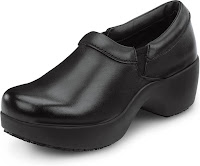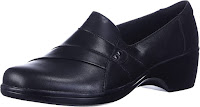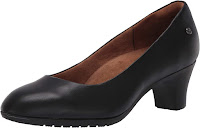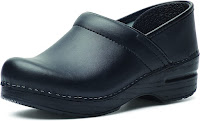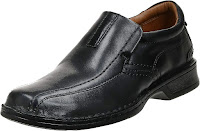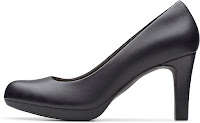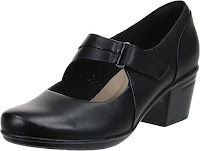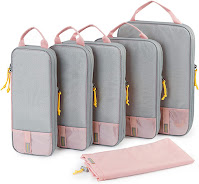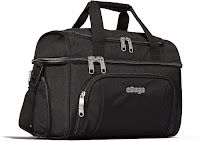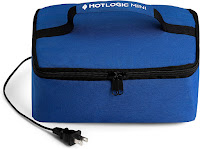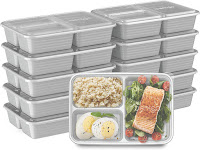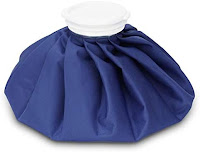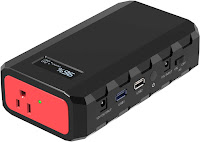So, you've been invited to the Face to Face (F2F) interview. Congratulations! Now you need to stand out from the others. The first interview I went to I wore a navy-blue pencil skirt suit with a red scarf. I was hoping the red scarf would help me stand out. But literally every female in there was wearing the exact same thing. Some had black suits. The males all wore dark suits with red ties. Out of almost 100 of us only two were hired and guess what they were wearing: that exact thing. One male, one female. So how do you stand out then? Here are some tips:
First and foremost: be on time! Actually show up a little early. It's absolutely essential that you are not late to this interview. You could be disqualified immediately. They may not even let you in. So set your alarms, wake up early, plan ahead. If you're driving in allow for possible traffic, parking issues, or just having any difficulties at all.This sounds so cliche and, I apologize in advance, but the most important thing you can wear is a smile. I hate even writing that because it sounds so dumb but it's so true. You need to be smiling and friendly the whole time you're there. Introduce yourself to other interviewees. Mingle. Be enthusiastic. Even if it's not in your nature to be that way, be that way. Fake it if you have to but get out there and talk to people and look happy and excited to be there. That being said, be yourself. I know, that may be contradicting to someone who is shy and introverted. But ask yourself, if you are shy and introverted, is this the right career choice for you? It still could be and if so, you’ll need to come out of your shell.
Very important; STAY OFF YOUR PHONE! Put it away. At the very minimum put it on silent and/or Do Not Disturb. Whatever you do, don’t touch it until you’re all done.
If they ask if anyone has any questions, ask a
question. Listen, though, to make sure
you don’t ask something that was already asked.
Don’t be obnoxious but don’t be a shy little mouse either. Show initiative but don’t be aggressive. Listen carefully to everything the recruiters
are saying. They may give you very
specific instructions. You need to show
you were listening by following these to a T.
Some of these instructions will come in advance in an email. Read all of the material sent to you in
advance fully and follow all of those instructions as well. Bring everything they tell you to bring. I recommend gathering those items and
packing them the night before. You’ll
probably need a copy of your resume. They may ask for several copies. Bring your passport and social security
card. If you don’t have these, get them
now.
Dress the part. Yes, you may be wearing what most others are wearing but if you’re a female, I highly recommend wearing a business suit with a skirt. A scarf is not required. Feel free if you like but the suit is essential. Dark colors are best. Make sure it fits well. Pants and sleeves should not be too long or too short and all items need to be in great condition. Skirts shouldn’t be too long or too short. I’d suggest at the knee or not more than two inches above the knee. Men definitely need to wear a tie and a belt. Women should wear pantyhose. Bring an extra pair. And heels for women. I wouldn’t go too high. Two inches maybe, whatever you're comfortable with but no stilettos.
I highly recommend wearing your hair up if you have longer hair. Not all airlines require it but wear it that
way for the interview. Make up should
look professional and not overdone.
Facial hair on men should be neatly groomed. It’s not necessary to be clean shaven (check
with the airline you are applying too first, though) but if you don’t have
facial hair at all, you must be freshly shaved. No 5-o'clock shadow! Find out if your airline allows men to wear ponytails or man buns. If so, if you have longer hair, it too needs
to be up.
How to dress for your flight to the interview? Remember you are making an impression from the get go. Please don’t treat this flight like any other flight you may take and dress super casual. You don’t necessarily have to wear a skirt if you are a female but consider nice professional pants and dressier shirt. Men, this goes for you as well Dress professionally. Be polite and take whatever seat you are given. Consider your interview has already started with the flight in.
Interviews can be stressful and intimidating. But the more prepared you are the better you
will do. Do your homework and study
these interview questions. You will most
likely be asked many of these. Each
airline has their own format for interviews.
I’ll get together a list in the near future of what you may generally
expect from each airline at their interview.
Some airlines have you broken into groups and questions ask in those
group settings. Then you may be
separated further into smaller groups of two or three or you could be
alone. You may have just a one-on-one
question and answer session or two on one.
At my current airline we started by being paired with one other interviewee and it
was a two-on-two question and answer session.
Afterward we were paired with another interviewee and had one
interviewer. I would expect something
similar at most airlines. Another interview I had we had a question and answer session with a group of other people being interviewed. We each got one question.
A lot of questions are “tell me about a time” questions, also known as Situational questions. They may begin “tell me about a time when…”,
“describe a situation where…”, “give me an example of..”, “have you ever…”.
These should be answered in the STAR format.
The STAR format is comprised of S – Situation, T – Task, A – Action, R –
Result.
Situation: give the background of your story and what
situation was.
Task: what was your role in this situation? What were you required to do?
Action: what did you do and what steps did you take?
Result: what was the outcome? Feel free to brag a little about your
achievements. When as ked these situational type of questions, this format is best for answering them. Not all questions should be answered this way, however. You may get questions asking how you would handle a hypothetical situation. Answer this from the perspective of a flight attendant.
Some common questions you could be asked are:
• Tell me
about yourself
• Why do
you want to work at _____ Airlines
• What does
being a flight attendant mean to you
• What are the primary flight attendant duties
• Tell me
about a time you had to deal with a sudden unexpected change
• Tell me
about a time you had a conflict with a co-worker
• Tell me
about a time you were required to go above and beyond for your employer
• Where do
you see yourself in five years
• Tell me
about a time you had to deal with a particularly demanding customer
• Tell me
about a time you had to deal with an emergency
• What is the most challenging part of being a flight attendant
• How would you handle a passenger that refuses to follow the rules
There are many more. Get a good grasp of common questions and try in your head to come up with answers that flow easily from you. I’ll provide some links that will help. You want your answers to flow, yes, but not sound over rehearsed. You may be asked about previous positions you’ve had. Stay positive in your answers. You could be asked why you left or why you want to leave. Your answer should be a positive one. For example: you want to leave because your dream is to become a flight attendant and you’re pursuing that now. Or perhaps you’re hoping to leave because you want to fly on larger aircraft with a team of flight attendants now. Never ever ever ever say bad things about this employer or your boss. No matter how tempting. Don’t do it!
If asked the common question: "tell me what you think one of your biggest weaknesses is" (or "what do you want to change most about yourself") try to answer in a way that minimizes the negative. Don't say you have trouble with time management or honesty. I'm not suggesting you answer this way but when I was asked this I said I felt I needed to learn to pack lighter, that I brought too many clothes on trips and I was working on that.
Again, interviews are stressful. Everyone there is feeling the same
thing. You're not alone in this. Try and stay calm. Preparation is the key. The more prepared you are the more relaxed
and confident you will be. Here are those
links that should be helpful to you:
https://flightattendanttraininghq.com/united-airlines-flight-attendant-interview-questions/
https://jobinterviewadvice.org/southwest-airlines-2/
https://www.thesegoldwings.com/delta-interview-process/
https://www.indeed.com/career-advice/interviewing/flight-attendant-interview-questions
https://www.liveabout.com/flight-attendant-interview-questions-2061445
https://becomeastewardess.blogspot.com/p/flight-attendant-interview-questions.html?spref=pi&m=1
https://youtu.be/3pfmaj_Lxqs
https://youtu.be/fl_vf_erC5k
To send a thank you note or not? I've heard a statistic that 85-90% of interviewees that send a followup thank you note get the job. So it can't hurt! Feel free to use this one as a start and adapt to your situation.
January 1, 2023Ms. Jane DoeDirector of Inflight RecruitingUnited Airlines233 South Wacker DriveChicago, IL 60606.Dear Ms. Doe:Thank you for taking time to speak with me yesterday about the flight attendant position at United Airlines.I am extremely motivated and interested in a flight attendant career at your airline. My strong customer service background, along with my Spanish language skills and Emergency Medical Technician training would allow me to contribute to United Airlines.I was so impressed with the professional exhibited at the interview and during the entire process. I feel that my experience, training and background would make me a great asset to the United Airlines team.Again, thank you again for your time and I hope to hear from you soon!Sincerely,Jennifer Jones
Please do not get discouraged if you get a TBNT (thanks but no thanks). It happens to so many of us. Don't take this personally. I've had them too and tried to learn from them. Analyze your answers and everything involved. Did you under dress for the interview? Some airlines are strict about hair. Was yours up or down? Were you clean shaven or was your facial hair not groomed? Were you engaging with others at the interview and with the recruiters? Go over the question and answer portion. It's a learning experience. Don't give up. You may not even have made it past the video interview. Keep applying, though. I've been there too. I have bombed video interviews and face to face interviews. I've had interviews that I thought went really well but only 2 out of a huge group of us were selected. I've had interviews where I got kind of a bad vibe from one of the interviewers. I had one where they had us play a little game in groups Then get up and tell a little about ourselves. Afterward they called about 5 or 6 people to speak with the recruiters and the rest of us were sent home. We never even got to talk to anyone! That was very discouraging. I've had a few experiences where I felt they were rejecting me right of the bat based on age. I kept at it, though. Consider applying at a regional if you haven't had success at a legacy carrier. It's a good way to get flight attendant experience and perhaps your foot in the door. If this is your dream job, though, don't give up on it. Keep pressing forward and you'll get there eventually.










.jpg)
.jpg)







